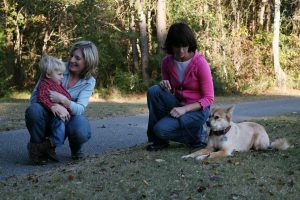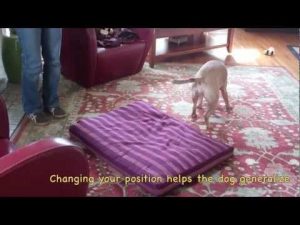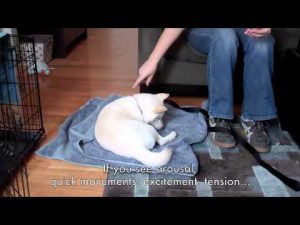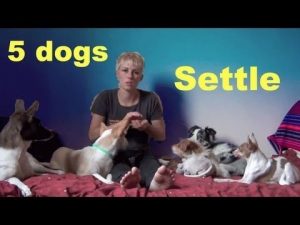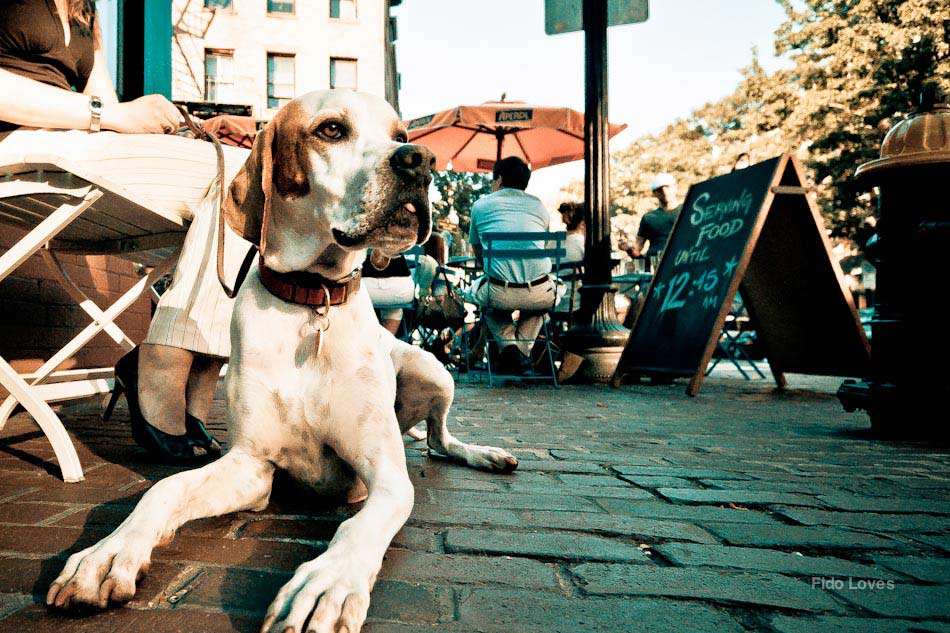
Summer is in full swing… a great time to grab a meal or drink with family and friends. Add our sunny weather and your dog and it’s just about perfect! What can make it less than perfect? Your dog acting rowdy or rude on the restaurant patio. So what does your dog need to be a great mealtime companion?
– A terrific sit stay A great “sit stay” is a cure-all for many problems. Would you prefer your dog to sit instead of jumping on the waiter or waitress, hang out patiently before you’re seated at a table, or wait calmly for you to find your phone and car keys? Train a sit stay and these problems (and more) are solved. Sit stay is the command to accomplish all of those goals, and a great way to calmly transition your dog from one activity to another.
– An understanding of the “place” cue “Place” is a terrific command for settling your dog in one spot. Bringing along a bed or mat, and laying it out at your feet or near your table, clearly defines where you’d like your pup to chill out — and helps you to relax as well! Video here.
– The ability to “leave it” Ohhh yes… Eyeing that nacho as it moves from plate to mouth, snuffling under your table for the french fry that dropped? “Leave it” cues your dog to back off, to cease and desist, and just generally to forget about cleaning off your plate.
– Friendliness and steadiness Basic friendliness and a calm demeanor is super important for dining out. Your dog may want to be with you, but may not want lots of activity, loud music, children running by your table, or car traffic in close proximity. Be realistic, and if your dog is already steady in that type of environment — make that reservation! If not, work towards your goal by starting with quieter cafes and restaurants at their slowest times. Read more here.
– A comfortable spot Your dog needs shade, water, and enough space to lie down comfortably. When you sit down to chow down, make sure that your dog will be comfortable and cool for the entire meal. If your dog is a puppy or a young adult, consider a walk before hitting the restaurant — taking the ‘edge’ off will help him to settle faster. Bringing a stuffed Kong or chew bone along can help too… just like a coloring book for a child.
Thanks for reading and bon appetit!






